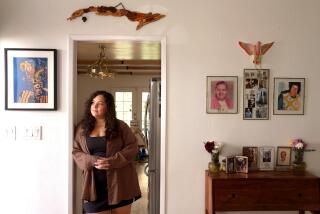Women and minority TV directors rank low among first-time hires, study shows
- Share via
A new study looking at the TV hiring underbelly has some not-so-shocking results: Women and minority television directors are at a disadvantage in getting their foot in the door.
That’s according to a six-year analysis by the Directors Guild of America released Thursday that examined the demographics of first-time TV director hires. The six-year period began with the 2009-10 season and ended with the 2014-15 season, and found that 611 directors who had never worked in television were hired.
The study, which comes at a time when diversity is still a hot-button issue within Hollywood, revealed that 82% (or 501) of all first-time directors during that span were male, and 18% (110) were female; meanwhile, 86% (528) were Caucasian and 14% (83) were minority directors.
SIGN UP for the free Indie Focus movies newsletter >>
“You can’t increase diversity in the long term without focusing on entry into the business — we challenge the networks, studios and executive producers who make all the hiring decisions in episodic television to set diversity hiring goals,” DGA President Paris Barclay said in a statement.
Barclay added that the retention rate of female and minority TV directors should be motivation enough to spur more of their hires. Data showed that 51% of female and 42% of minority first-time episodic TV directors continued directing on the series — outpacing their male and Caucasian counterparts, whose continuation rates were 44% and 36%, respectively.
When breaking down the backgrounds of these first-time episodic TV directors, writers and producers made up 26% of the pool; actors 20%; cinematographers and camera operators were 8%; editors came in at 5% and other crew made up 6%. These hiring practices are contributing to the lack of diversity, according to Barclay.
“It may sound revolutionary, but those with the power to hire may want to consider bringing in more directors — people who are committed to directing as a career — instead of approaching the assignment as a perk,” he said.
The study showed that 27% of first-time hires were individuals who previously had directed in other genres, such as independent film, new media, commercials, etc. The remaining 8% were part of the directorial team — assistant directors, unit production managers and second unit directors.
“There are many willing, able, and experienced women and diverse directors out there — we encourage the employers to reach out and hire them,” Barclay said.
The report follows last month’s DGA study that looked more broadly at the demographics of episodic TV directors. For that, the DGA combed through more than 3,900 episodes produced in the 2014-15 television season from more than 270 scripted series.
The results showed a modest increase in the representation of female directors. According to the report, the percentage of episodes directed by women rose to 16% from 14%. Whereas, minorities (both male and female) directed 18% of all episodes, representing a 1% decrease over the prior year.
That analysis pointed to the importance of hiring first-time episodic directors as a way to usher in change in the long run.
I tweet about TV (and other things) here: @villarrealy
MORE:
So many summer movies, so few female directors
‘Diversity doesn’t just happen’: Six women in film discuss the challenges ahead
USC study finds minorities are still scarce in Hollywood
New facts on film’s ‘epidemic of invisibility’ for women, minorities
Female film directors are on outside looking in, but will ACLU flip the script?
Aiming to diversify storytelling, Ava DuVernay expands scope of film distribution collective
More to Read
From the Oscars to the Emmys.
Get the Envelope newsletter for exclusive awards season coverage, behind-the-scenes stories from the Envelope podcast and columnist Glenn Whipp’s must-read analysis.
You may occasionally receive promotional content from the Los Angeles Times.











